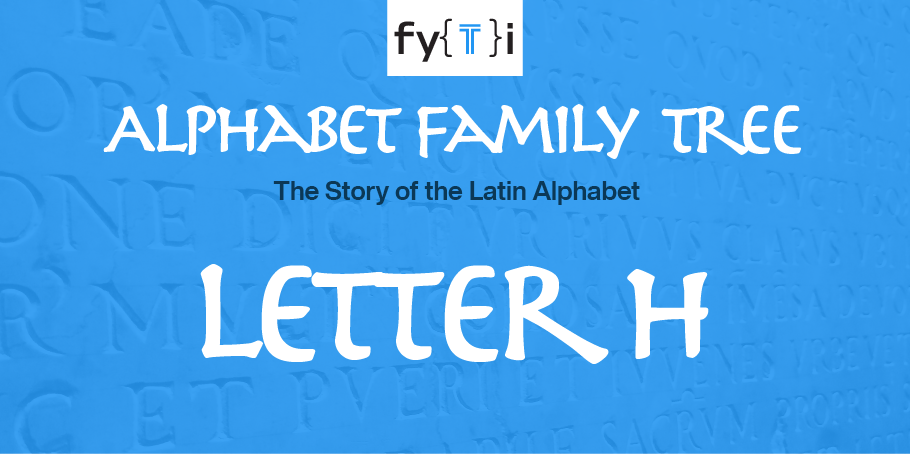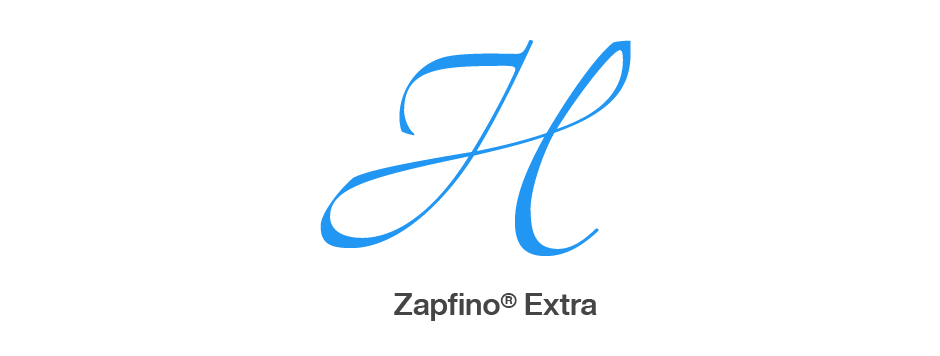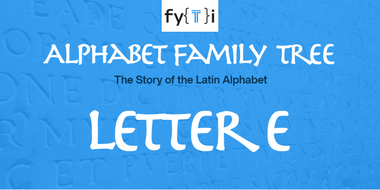Alphabet Tree - The Letter H

Of all the letters, the H could be labeled as the most boring. Stable and symmetrical, with both feet planted firmly on the ground, the H has been predictable in its design and use, throughout much of its history.
For example, it held the same position (the eighth letter) in the Semitic, Greek, Etruscan, and Latin alphabets. Only in the hands of type designers like Hermann Zapf (or in ten-dollar words like “heliotrope”) does the H begin to exude a touch of glamour.

Many historians believe that the H started out as the Egyptian hieroglyph for a sieve. It represented the same guttural, back-of-the-throat sound (think hissing cat) used by the Sumerians over a thousand years later, once again demonstrating the H’s yawn-provoking consistency.
The Semites called the character kheth, which meant “fence.” Indeed, their representation of it could be imagined to resemble a fence, or at least part of one.

Somewhere around 900 B.C. the Greeks borrowed the kheth and dropped the top and bottom horizontal bars. Since they couldn’t pronounce the sound of the kheth, they called the letter eta. It was first used as a consonant. Later, however, the sign acquired the sound of a long ‘e’, to distinguish it from the short ‘e’ sound represented by the Greek letter epsilon.

The Etruscans and Romans adapted the Greek eta for their own alphabets. The Etruscans put the top and bottom crossbars back on the letter.

The Romans continued to leave the top and bottom crossbar off. The early monumental Roman H was the prototype of our current eighth letter.


Helvetica’s lineage can be traced back to the late 1800s, to a typeface called Akzidenz Grotesk, first released by the Berthold type foundry. In the mid-1950s Edouard Hoffman at the Haas Typefoundry, in Switzerland, felt that a new version of the original design was in order. He approached the type designer Max Miedinger and together they produced the first weights of the new family. In the 1957, the result of their collaboration was released as “New Haas Grotesk.”
In 1961, D Stempel A.G., the parent company of Haas, in Frankfurt, decided to offer the design to their customers in Germany. Stempel felt that they would be unable to market a new face under another foundry’s name, however, and looked for a name that would embody the spirit and heritage of the face. They settled on “Helvetica” which was a close approximation of “Helvetia,” the name of Switzerland. The first designs were just roman weights. Italics were created four years later. New weights and proportions were added to the Helvetica family, by various designers, over the years.
Neue Helvetica was drawn in 1983, as an updated and improved design over Helvetica. The design is more consistent and the family is built within a modern (numeric) system of typefaces. Over the years, sixty typefaces were added the family, plus suites of Armenian, e-Text, Thai, Greek, Cyrillic, Georgian, Rounded, and Arabic fonts.
Helvetica Now is a 2019 update of the original design with three optical sizes: Micro, for legibility at small sizes; Text, for comfortable reading in body copy, and Display, for headlines. The design also features alternate characters. It is not, however, compatible for use with Helvetica or Neue Helvetica.



